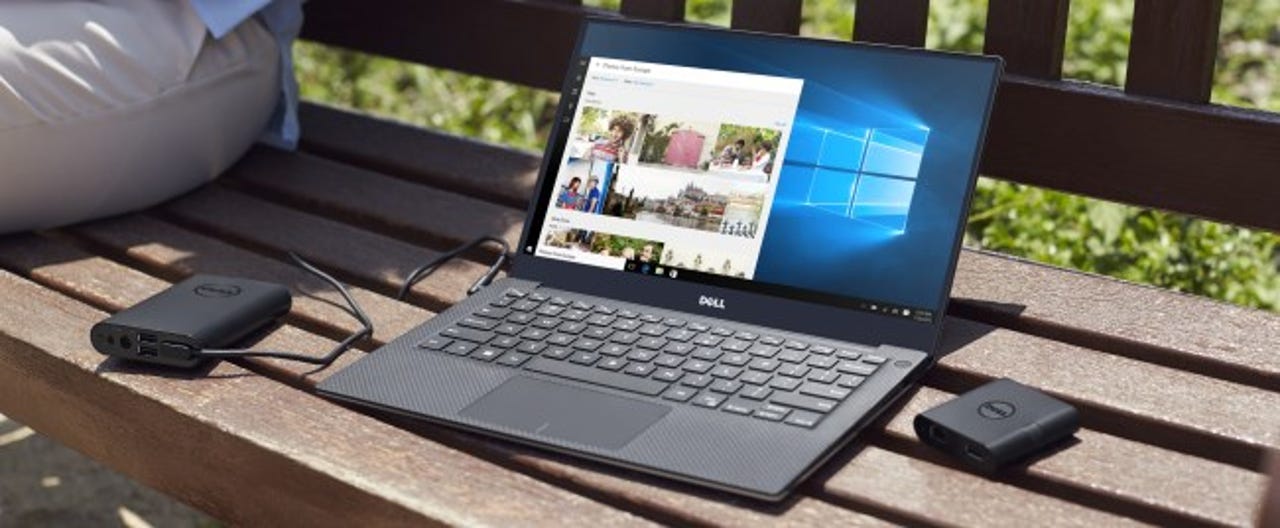How Dell plans to grow its PC business in a declining market


The Dell XPS 13 is a consumer product that is selling into the business market, and also influencing the design of new Latitude laptops
Doom and gloom surrounds the PC market, but Dell reckons that "2016 is shaping up to be a positive year in terms of commercial PC refresh". I talked to Dublin-based Fergus Murphy, the marketing director for Dell Client Solutions in Europe, to find out how he views the market.
Murphy says Dell did "some primary research around customer needs" when the company went private two years ago, and "that has informed our product direction." The changes have only just started to become visible, but Dell is attempting to cater for what Murphy refers to as the evolving workforce and the evolving workspace.
The workforce is changing, and Murphy points out that "by 2020, the majority of the workforce will be millennials. Like my children, they have grown up with the internet, they have had a mobile phone since their teens, and they're more used to sharing than the average IT director would be."
Dell is therefore starting to target a range of personas or "user profiles" in Workplace 2.0. The main ones are the desk-centric worker (the traditional corporate PC user), the "corridor warrior" (who typically goes from meeting to meeting), the "on-the-go pro" (a mobile worker, perhaps in sales or field service), and the remote worker who rarely goes into the office. Murphy says: "It helps customers to put a bit of a framework around their own thinking about the workplace, and how they segment their users."
There's no shortage of PCs for desk-centric and remote workers, but Dell is developing more thin-and-light products for the "corridor warriors" and "on-the-go pros". These may well be detachable or 2-in-1 devices, like the XPS 12. Murphy says key features include wireless monitor connections, single-cable docking stations, WiGig (802.11ad gigabit wireless internet), and the ability to charge smartphones.
"We've also been working with our partners at Intel on a collaborative technology called Intel Unite," says Murphy. "It's a very small PC that you put into a conference room that allows you to add all those thousands of old VGA projectors to a wireless environment. So you come into a meeting room and you can dock and display wirelessly without having to fumble with cables. The whole wire-free environment - wireless monitors, wireless charging and so on - is really important for corridor warriors."
While BYOD seems to have faded somewhat, don't millennials expect to choose their own devices? "They do. That's one of the reasons why the new devices are more appealing to that age group," says Murphy. "We've put a lot of focus on the design of products like the XPS 13 for that very reason. They fit into a 'choose your own device' strategy where you choose from a pre-approved list, as opposed to the old situation where you'd just take what you were given."
XPS is, I point out, a consumer brand, not a business brand, although businesses are buying them....
"It has been successful in the commercial space, but we haven't really changed the branding. The XPS will always be a consumer brand, but it tends to be first to market with new technologies, and gets more frequent refreshes than the business products," Murphy says. "We can make the Latitudes sexier by borrowing from XPS. The Latitude 13 is, in many ways, the XPS 13 in a commercial form factor, with the stability, security and manageability that the IT management community values. It's a good balance - a combination of the beauty and the brawn."
Dell pioneered Android phablets with its Streak smartphones, and also sold Android tablets, but what's the current strategy with operating systems?
Murphy says "we dipped our toes in the water with Android, but we've decided to focus the commercial business on three operating systems: Microsoft Windows, Google Chrome, and Ubuntu Linux on some models. We're not seeing a huge shift, but we're seeing more interest in the 11-inch Chromebook, mostly in the education space. It's not as much as it is in the US, but we're seeing educational institutions that would have bought Macintosh in the past, moving towards Chromebooks. That's part of the move to a cloud model, which the is main trend in the past year."
What about the desktop market?
"The desktop is by no means dead," says Murphy, "but it's changing shape. We're seeing more form factors, and more interest in the micro form factor, as we call it, that takes up less space, uses less power, and is greener. You can put one on the back of a 21-inch monitor, so it's out of sight. They're preferred to all-in-ones, where you have to refresh everything at once. Traditionally, in our industry, the monitor isn't refreshed as often as the PC itself."
Like Microsoft and everybody else, Dell is looking forward to a new wave of touch-based computing with smart desks - "that's where we see the desktop going, though not for everybody" - and perhaps virtual reality.
Murphy reckons that "VR will make its way into the commercial IT space with engineers and designers," but nobody is going to put a date on that. There are certainly going to be lots of special projects based on the VR systems now becoming available, but it will be a while before they make a big impact on companies that have only just - or not quite - migrated from Windows XP.
Still, there are now only three major suppliers of end-to-end corporate IT systems: Dell, HP, and Lenovo. Late last year, Michael Dell, the company founder and CEO, predicted that market consolidation would enable these three to grow their market share from just over 50 percent to about 80 percent over the next five to seven years. Even though the overall PC market is in decline, Dell still wants to grow its PC business.